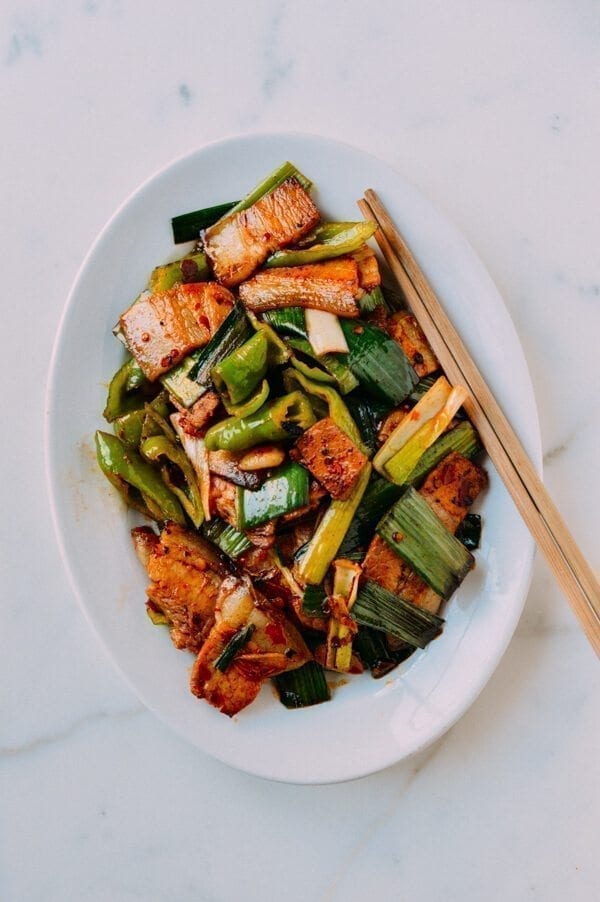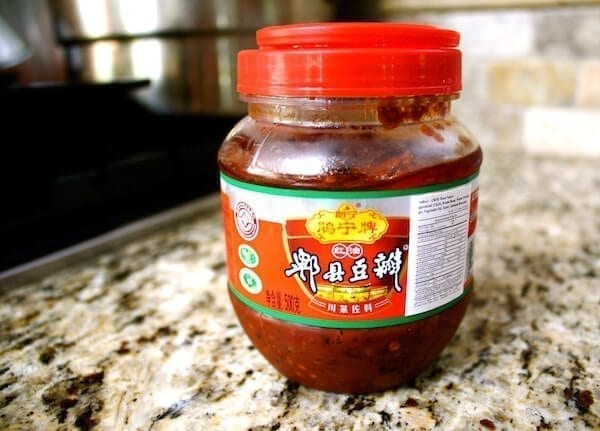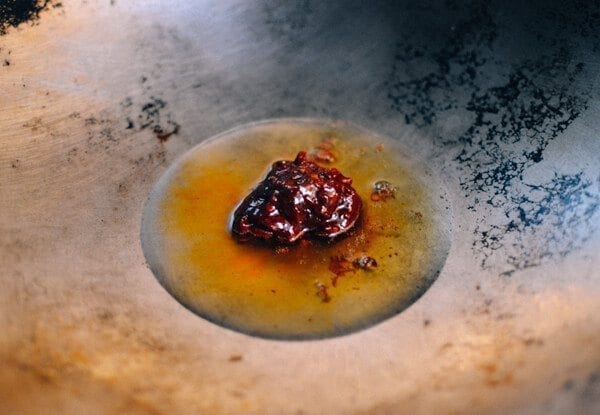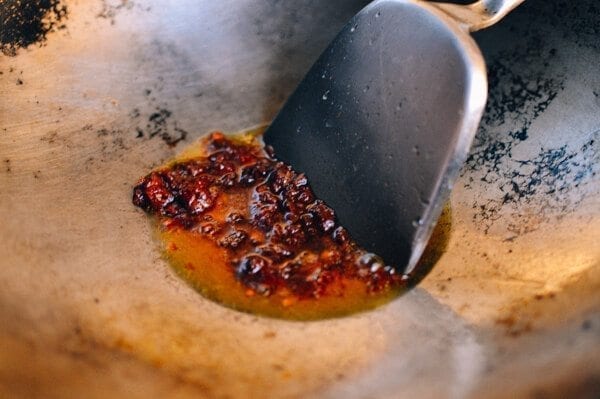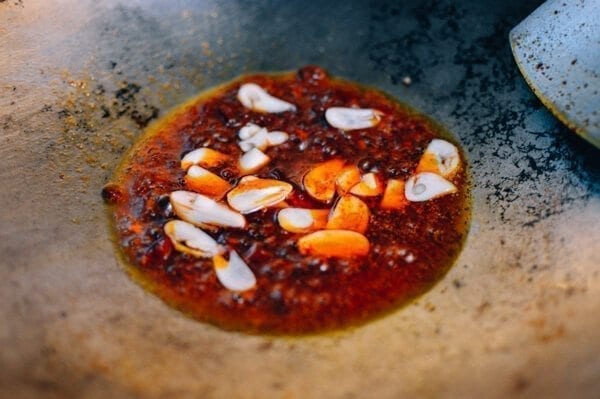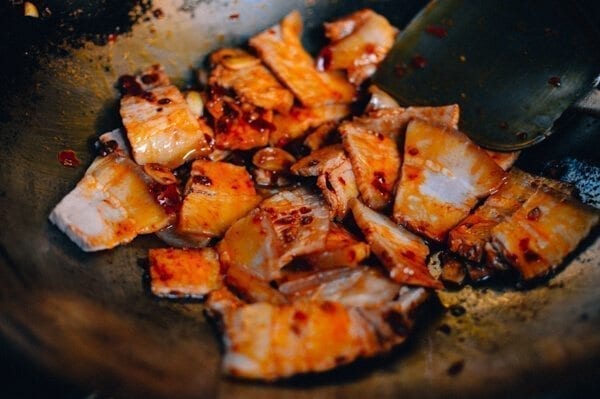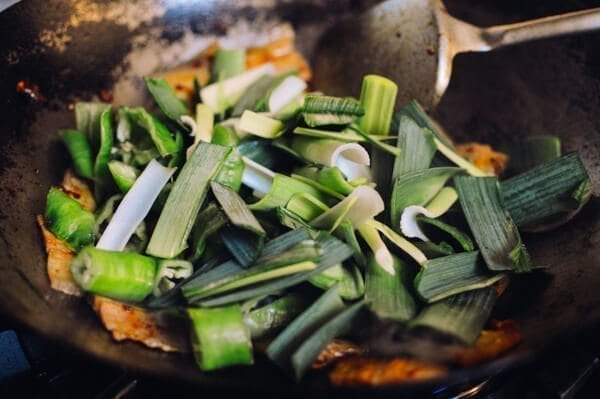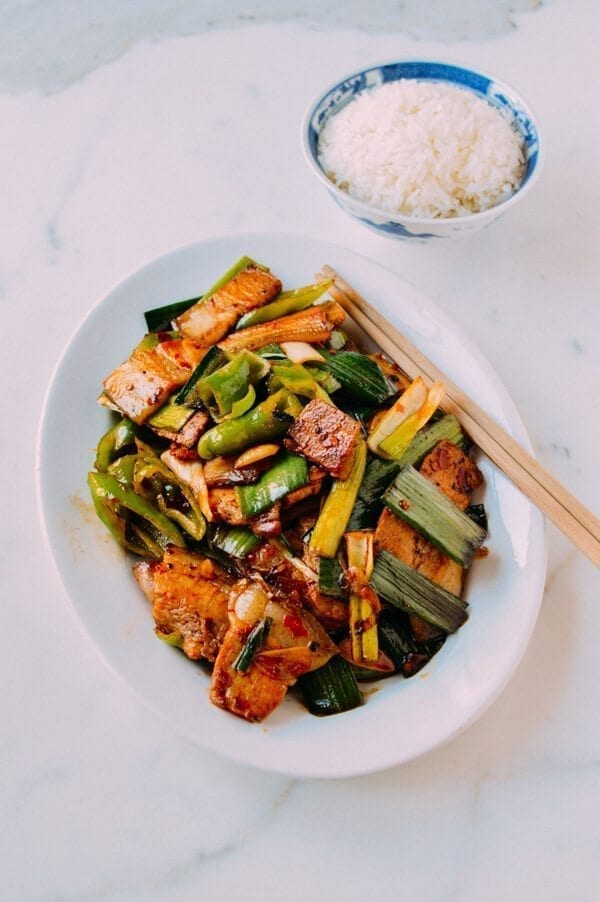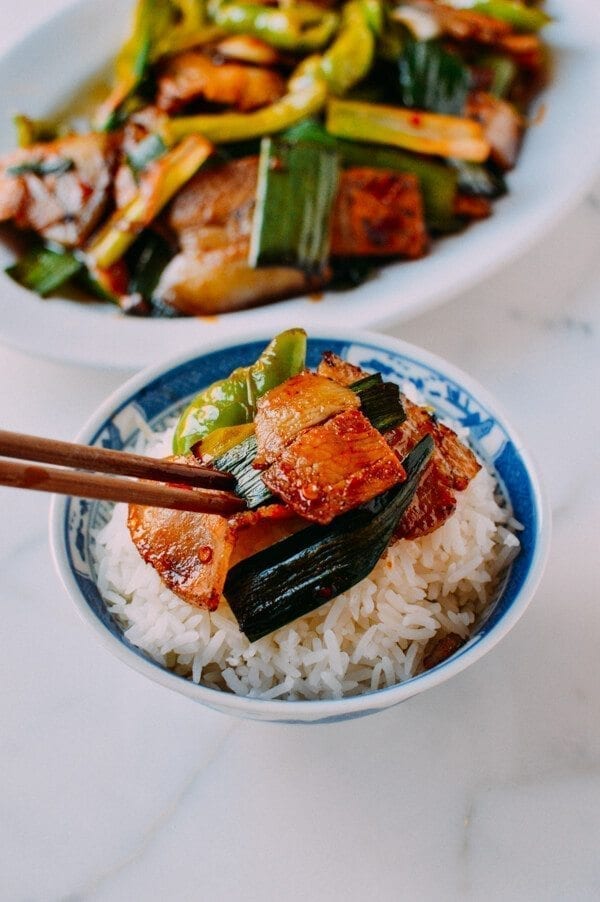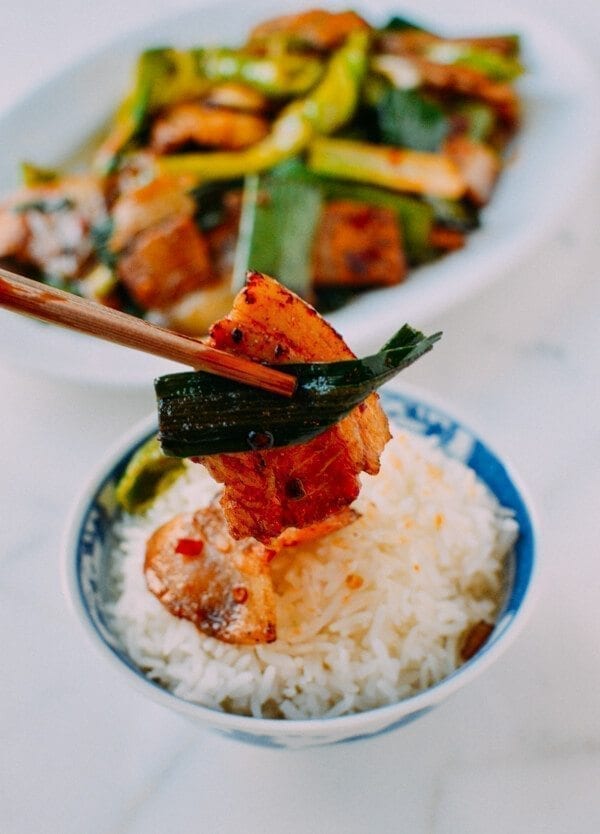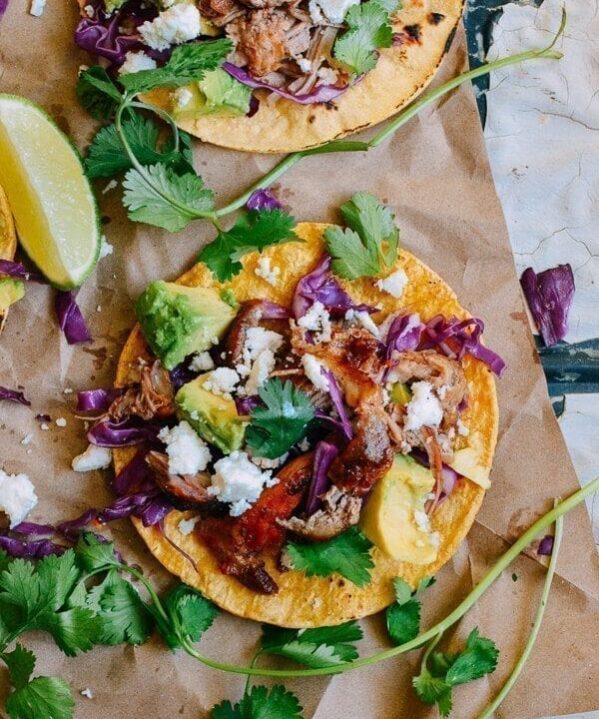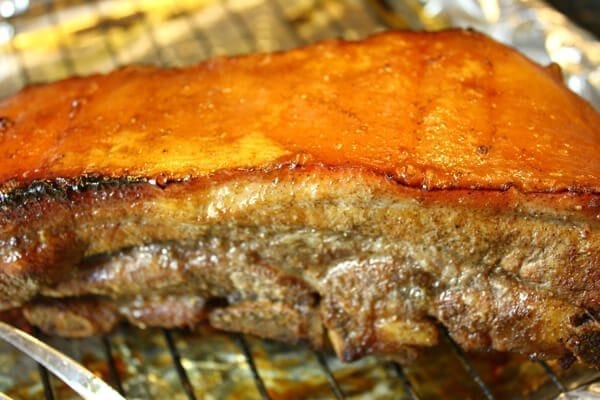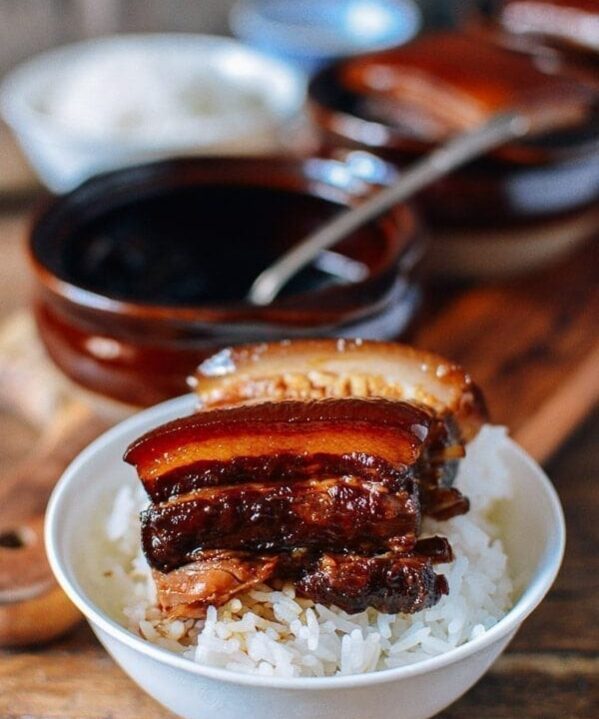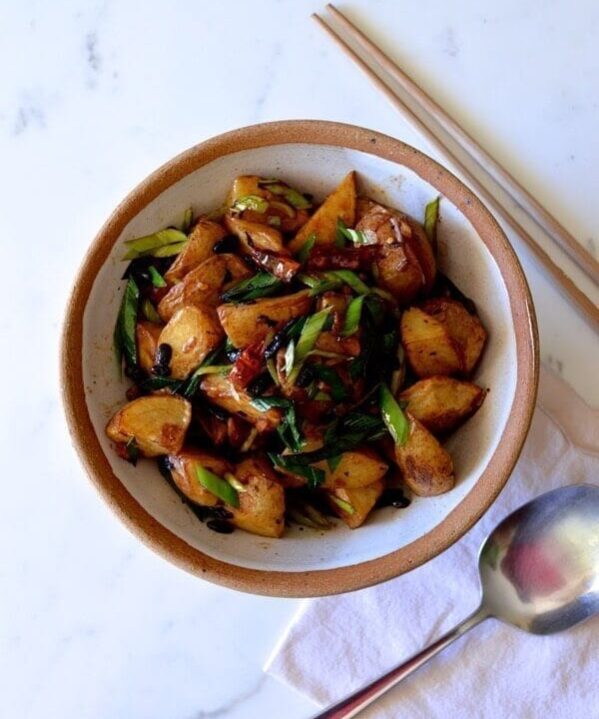Twice Cooked Pork, or hui guo rou (回鍋肉), is a Sichuan dish of spicy seared pork belly that’s way too famous to ignore and too delicious not to share. If you’ve never tried it, you NEED to make this recipe. It is simply and unequivocally delicious!
Yes, Shanghai Braised pork belly is irresistible and yes, Cantonese roast pork belly is delicious, but pork belly recipes in Sichuan, China are different and when cooked right, this dish melts in your mouth and gives such a pleasant hot chili bean flavor that you may down two or three servings of rice with it.
In the US, this dish has evolved as demand for authentic Chinese cooking has grown. I clearly remember the Twice Cooked Pork we’d make in our take-out restaurant in the old days: boiled pork, cabbage, five-spiced tofu, green and red bell pepper, hoisin sauce, soy sauce and hot sauce. For a long, long time, I thought we were making “twice cooked pork.”
But as more and more authentic Sichuan restaurants open up, the true twice cooked pork has revealed itself. It’s amazingly decadent and addictive.
If you find yourself in a restaurant with a lot of Chinese diners and you see this dish on the menu, order it. Most likely, it will be pretty authentic.
We also had the dish often while living in Beijing, and developed this particular recipe based off of some of the best versions we had around the city. Only the best for our readers!
Twice Cooked Pork: Recipe Instructions
Important notes, before we begin:
- Don’t forget to make rice in advance because you’ll need it.
- Just to make this really clear: the pork is sliced AFTER being boiled.
- The right hot bean paste really makes this dish, so see photo below for the right brand.
In a medium pot, bring 2 quarts of water to a boil. Add the whole piece of pork belly and the ginger, and bring the pot to a boil again. Lower the heat and simmer for 30 minutes, until the pork is tender and cooked through. Remove the pork from the pot and run it under cold running water for about a minute. Set aside.
While the pork is cooling, prepare all the other ingredients. Once you are ready to cook (don’t do this in advance, or the pork will dry out), thinly slice the pork belly (slices should be about 1/8 inch thick).
Heat your wok over high heat until just starting to smoke. Add 1 tablespoon of oil and sear the pork, until you get a light caramelization, about 90 seconds. Turn the heat to medium-low and scoop out the pork. Add another tablespoon of oil to the wok.
Add the spicy broad bean paste to the wok and let it fry in the oil for about 30 seconds to bring out the flavor and color. The color should be red; pay attention to the heat to avoid burning.
Now add the garlic and fry for 30 seconds.
Turn the heat to high and add the pork, long hot green peppers, and leeks.
Stir-fry for a minute. Add the shaoxing wine, soy sauce, and sugar. Stir everything together. Once the leeks and are wilted and the peppers are cooked (while still having a little crunch), it’s ready to serve.
Twice Cooked Pork
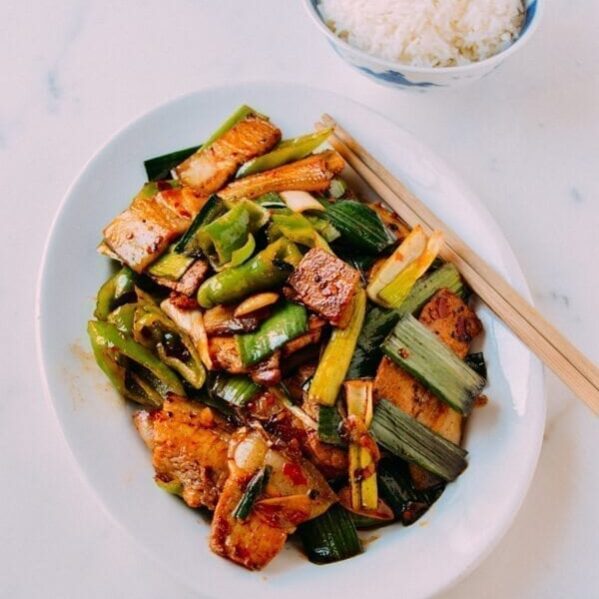
Ingredients
- 1 pound pork belly (450g, you HAVE to use pork belly, or it's not twice cooked pork)
- 2 slices ginger
- 2 tablespoons oil (divided)
- 1 1/2 tablespoons spicy broad bean paste
- 2 cloves garlic (sliced)
- 2 long hot green peppers (seeds removed and cut into 1 1/2 inch pieces)
- 1 medium leek (split lengthwise, washed thoroughly, and cut in 2-inch pieces)
- 1 tablespoon shaoxing wine
- 1 teaspoon soy sauce
- 1/4 teaspoon sugar
Instructions
- In a medium pot, bring 2 quarts of water to a boil. Add the whole piece of pork belly and the ginger, and bring the pot to a boil again. Lower the heat and simmer for 30 minutes, until the pork is tender and cooked through. Remove the pork from the pot and run it under cold running water for about a minute. Set aside.
- While the pork is cooling, prepare all the other ingredients. Once you are ready to cook (don't do this in advance, or the pork will dry out), thinly slice the pork belly (slices should be about 1/8 inch thick).
- Heat your wok over high heat until just starting to smoke. Add 1 tablespoon of oil and sear the pork, until you get a light caramelization, about 90 seconds. Turn the heat to medium-low and scoop out the pork. Add another tablespoon of oil to the wok.
- Add the spicy broad bean paste to the wok and let it fry in the oil for about 30 seconds to bring out the flavor and color. The color should be red; pay attention to the heat to avoid burning.
- Now add the garlic and fry for 30 seconds. Turn the heat to high and add the pork, peppers, and leeks. Stir-fry for a minute. Add the shaoxing wine, soy sauce, and sugar. Stir everything together. Once the leeks and are wilted and the peppers are cooked (while still having a little crunch), it's ready to serve.
